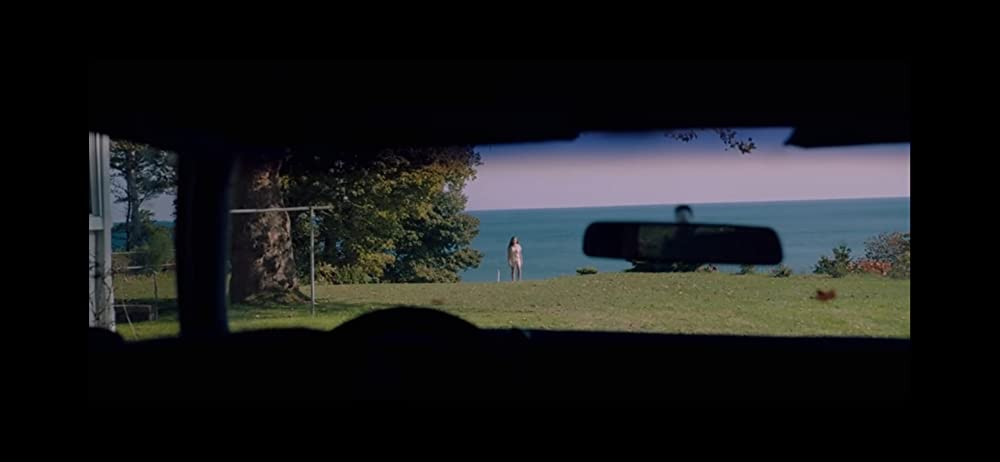
It Follows managed to crack a certain critical barrier among horror movies when it was released, garnering the kind of widespread praise that these things only rarely get. Not being a horror fan, but reading a lot of movie websites at the time, I heard a lot about it, and saw it held up as a new sort of innovative, self-aware (but not self-parodying) fright flick, one of the select few from the middle of the previous decade being touted. I can imagine this was at least partially due to it straying away from the found footage-focused paradigm that proliferated back then. I also imagine that it has to do with its efficient pitch, one with a primal meaning at the centre of it that still allowed for a depth of symbolism: a sexually-transmitted curse that puts you in the sights of a methodically murderous shape-changing entity, one that only the cursed people can see and that will not stop until you are dead or you pass it on to someone else…but with the possibility of it going back to you once its current target has been dealt with. It’s a gimmick for sure, one that comes with its set of rules—and if there’s one thing I’ve learned, it’s that there’s a subset of horror fans who love rules—but it also intelligently plays with the fears of its adolescent target audience, and director David Robert Mitchell uses the camera to show all the the ways that the gimmick can sow paranoia.
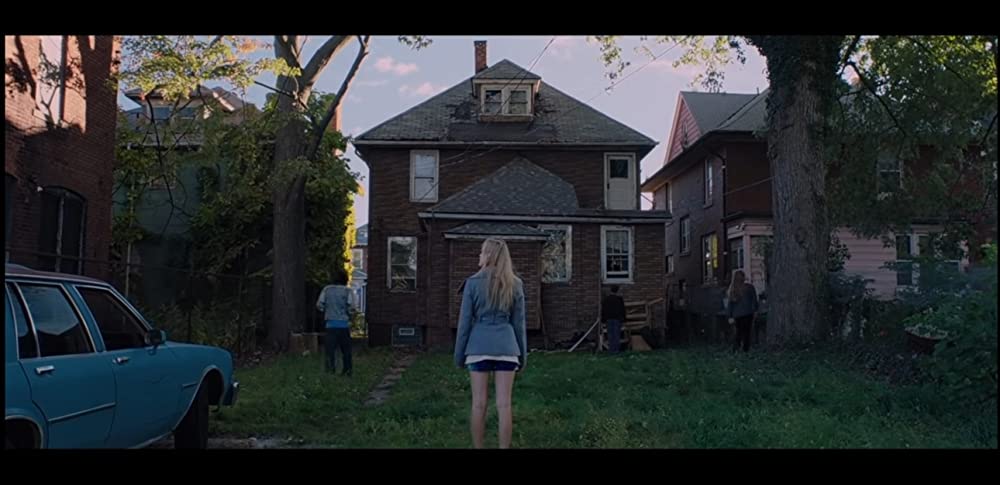
Right off the bat, It Follows invokes its horror predecessors in its opening sequence, showing a nameless victim of the It long before we know its methods a la Psycho/Scream, taking place in a suburban neighbourhood akin to Halloween. The latter is probably the most blatant comparison point for most of the movie, turning a quiet row of innocuous houses into a shadowy realm of unknown terror, but this movie’s choice of settings do take advantage of its Detroit location shoots, expanding it into grimier parts of town (including a gutted automobile plant in a key scene), and even spends some time outdoors at the beach. As we learn, nowhere is safe from It when it Follows you.
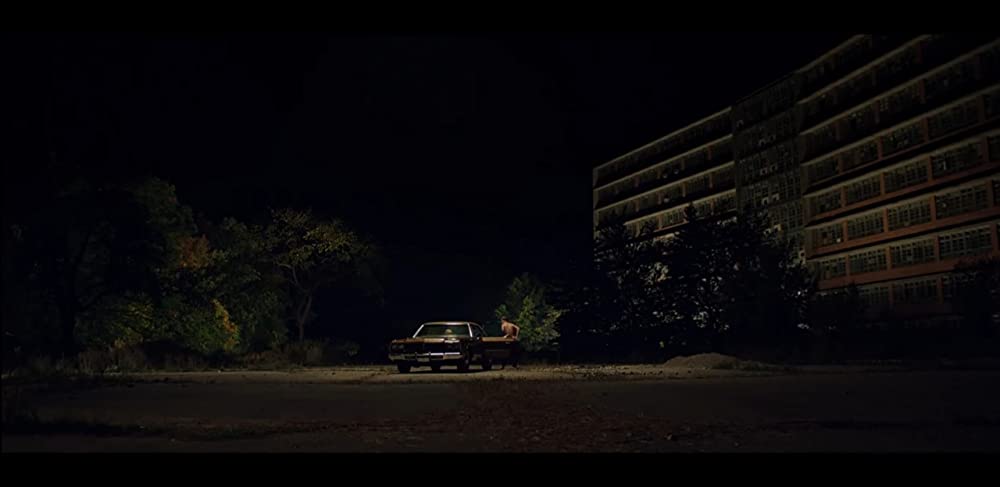
We focus on Jaime, a young college student in a relationship with Hugh, and despite him displaying some strange behaviour, they end up doing the deed in his car, followed by him knocking her out with chloroform and taking her to the aforementioned automobile plant. There, he explains the curse of It, and forces her to stay in one spot long enough to see the thing plod its way towards them before they escape. At first, she has no idea what to think other than that Hugh (which, as we learn, is not his real name) is some kind of creep, but after having a class interrupted by the appearance of an old lady zoning in on her, she begins to recognize that the curse is real, and tries to convince her sister Kelly and her two friends Paul and Yara. After being confronted by the thing in various guises, a number of escape attempts and plans are made alongside her neighbour Geoff, and they find “Hugh” again to learn more about the curse. The movie’s style is established fairly early, giving every scene a feeling of urgency, and the slow-moving nature of the entity and the way it is shown to blend in, until it suddenly stands out, really drills in the audience’s own uneasiness, constantly looking across the screen for signs of it.

This can be attributed to the camera—early on, much of the movie is seen from afar, wide shots that establish a horizontal distance, giving those scenes something of a peeping tom atmosphere. Everything seems to be coming from a POV, whether it be Jaime’s, a passerby (which Jaime becomes at a few points), or something unseen—there’s little in the way of tight close-ups, nor are there obvious shock camera moves to emphasize the entity once it enters the scene. It can saunter into a moment without much fanfare, effective when we’re inside a house or when we’re looking at from across the street, and it’s a smart choice, and while later scenes can be more traditional or more stylized, we never feel like we leave that perspective. The idea of making the monster just a person (possibly the ultimate expression of “humans are the real monsters”, although that really isn’t what the movie is saying) with maybe some extra make-up around the eyes is something that seems clever on the surface, but has the possibility of just becoming a shrug of a high concept without proper execution Thankfully, It Follows does what it can to properly execute the idea—it makes open spaces induce a persistent sense of dread, and makes you question every extra who appears on screen, which is probably its greatest asset as a horror movie.
(Also helping is the score by Richard “Disasterpiece” Vreeland, who is mostly known for composing the soundtracks for video games like Fez and Hyper Light Drifter, which is aiming for a more layered ambient sound rather than defaulting to imitation John Carpenter synths like other recent horror movies I’ve seen, although it still edges on that territory the further into the movie you get.)
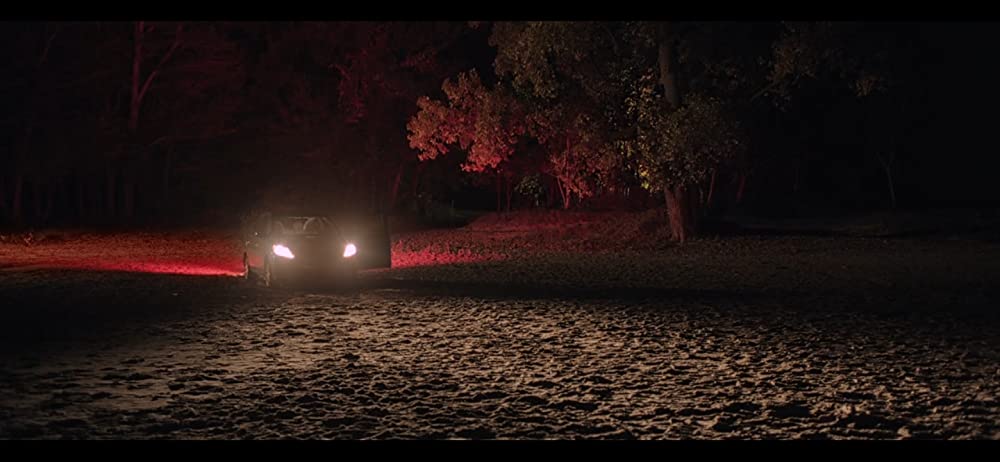
The style of the film really helps sell the concept—and it’s a rich concept, for as simple as that elevator pitch sounds. The director apparently prefers that it not be whittled down to just an STI metaphor, as easy as that would be to make, and certainly there are other concerns being expressed here. There’s at least a minor tinge of distrust here, even of the ones you are closest to, and especially of the ones you are intimate with—although the entity takes the form of strangers some of the time, for the most part it prefers to appear like people Jaime knows, from the neighbour kid who stares at her when she’s in her backyard pool to her friends and family. From what we see, the thing’s big move is to take the appearance of a parent (usually nude), which happens to Hugh, to Geoff after Jaime passes the curse onto the him (with his mom’s naked doppelganger writhing on top of him as he dies), and finally with Jaime herself, who is attacked by the thing in the form of her dead father—the disturbing connotations there are rather self-evident. The fling with Hugh and its aftermath are meant to give off the vibes of an assault, and probably the most shocking of the thing’s forms is of a woman in torn clothes pissing on the floor—the visage of a sexual assault victim. On the not-entirely-monster-related end, her relationships with Geoff, the confident guy from across the street, and her childhood friend Paul, who reminisces about the time they found porn in the woods and clearly has a bit of a jealousy streak when it comes to her, paints the weird expectations and relationship dynamics in her life—while Geoff is clearly someone she is attracted to, and he is nice enough to drive them around and let them stay at his lakeside cabin, he clearly doesn’t entirely believe her until it’s too late. There’s an ethical angle being pushed here, too, one that forces people to do things they may not want in order to save themselves, but without even a guarantee that it will work, as one unaware victim could send it backwards through the infection chain again—Hugh tries to help Jaime as much as he can when he gives her the curse, which he apparently got from a one-night stand (is that supposed to make us think less of him? I’m not sure), but he’s still putting her in a bad position, and I think it’s entirely intentional that both the opening sequence and the main plot make the main victims women.
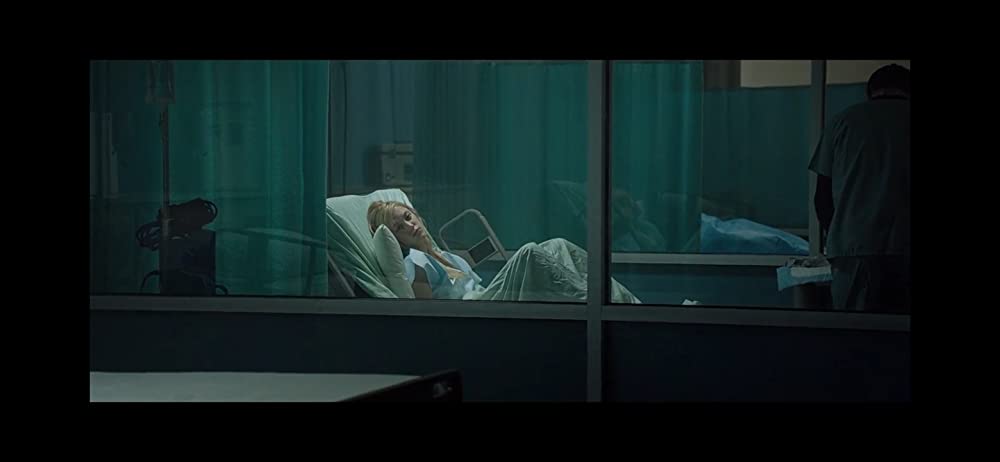
That the entity is never able to be killed, and has this ever-growing chain of people it can go back to when its current victim is dead, gives it a scope far beyond its rather personal-scale origins, and it plays into the paranoia because you’re never safe. Of course, that also means that the final plan cooked up by Paul, to lure the thing into a pool and try to electrocute it, doesn’t really make sense, especially after they have seen it get shot with a gun multiple times (which can stun it momentarily at least.) The setting for the climax, inside a school gymnasium pool, is interesting in a visual sense (there’s a lot water imagery in the movie, with characters either in water or at a lakeside), but only real works from a narrative sense if it’s meant to show their sad desperation to avoid the inevitable, which is simply for Jaime to have sex with someone else to pass the curse on (she had the opportunity to do so with strangers on a beach earlier, but apparently chose not to, showing her discomfort with the whole thing.) That it ends up being Paul is obvious, but his clear joy at getting it paired with his apparent inability to do the next logical (if morally dubious) thing and pass it to a sex worker shows just how complicated the whole business is.

As an intellectual exercise, It Follows is has plenty to think about in terms of the nature of its inexplicable monster and the ways it infects our emotional and biological imperatives—as a style exercise, it uses that concept to generate fear in situations that you wouldn’t expect, and in a way that’s not crassly showy. As much as those early reviews hyped this up as a terrifying experience, though, I never really found it particularly scary—the pointedly straightforward nature of its supernatural monstrosity always seemed more theoretically creepy, with a few moments of distressing imagery (and a select few more outright violent horror moments that honestly felt out of a place) being as close to disturbing as it got. That could just be me, though—I can imagine this stuff having a real visceral effect on others, especially people in the age range of the cast. For a supernatural monster movie, it does go into new territory, planting itself into the most intimate aspects of relationships, sex, and interpersonal trust, and burrowing in deep—this is a monster with an eternally relevant meaning, and once it’s there, it will never go away.

